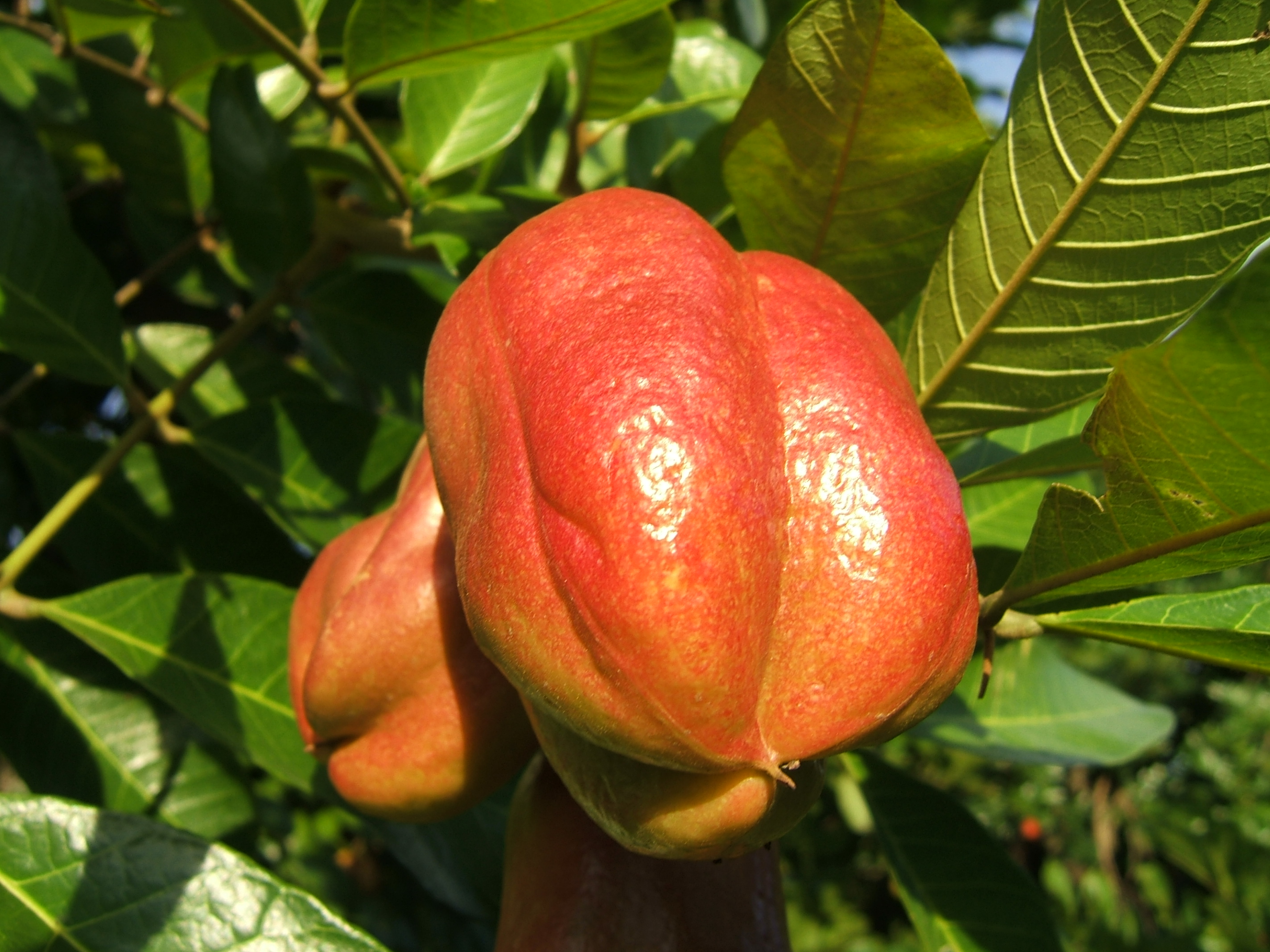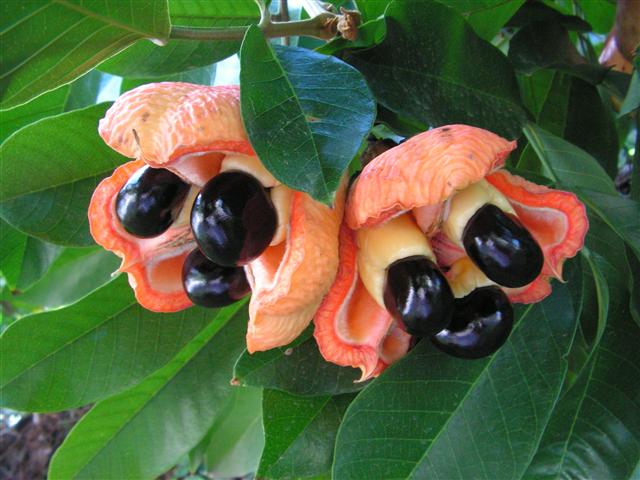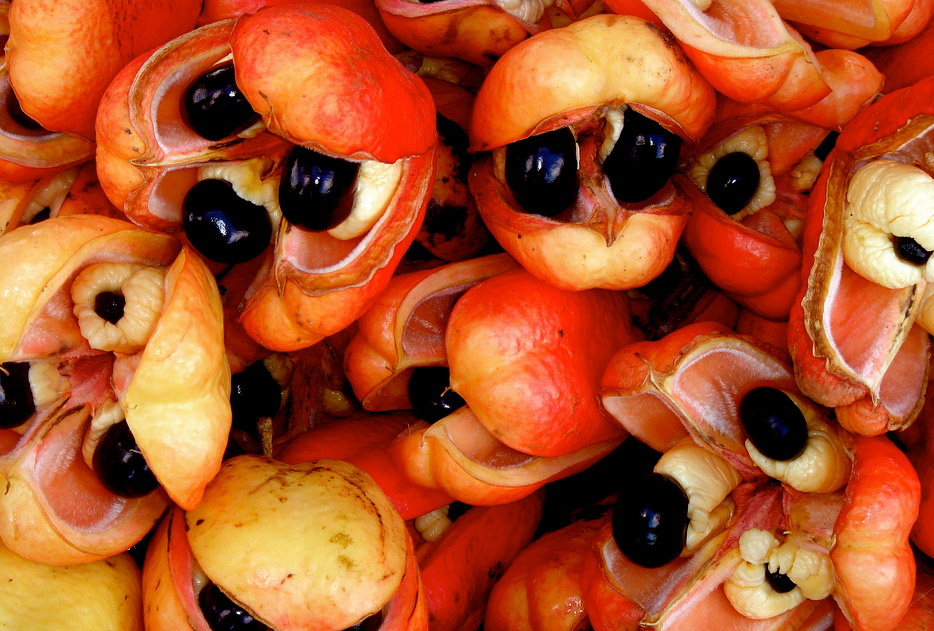Ackee
Ackee fruit
The ackee ( Blighia sapida ) is a plant which belongs to the family of Soapberry ( Sapindaceae ). It comes originally from tropical West Africa and is now the national fruit of Jamaica and is cultivated in tropical and subtropical areas around the world. Other names of the plant are Ackee, Aki or Akipflaume. It belongs to the same subfamily as Sapindoideae Litchi ( Litchi chinensis) and longan ( longan Dimocarpus ).
Description
The ackee grows as evergreen tree, reaching heights of growth of up to about 10 meters. He has a short trunk and a dense crown. The 15 to 30 cm long, symmetrical leaves are pinnate and have three to five pairs of leaflets. The leathery leaflets are ovate with a length of 8 to 12 cm and a width of 5 to 8 cm.
The flowers are borne in an inflorescence. The white and fragrant flowers are either male or hermaphrodite. The pear- shaped fruit turns bright red when ripe to yellow- orange and opens into three large columns, then come shining- black seeds to light, surrounded by soft, spongy, yellowish white flesh.
History
The genus name Blighia was William Bligh, captain of the HMS Bounty, chosen to honor. He brought in 1793 the first specimens from Jamaica to Kew Gardens and led them to a European science. Originally Blighia sapida comes from West Africa and was likely to have been slaves to Jamaica transports.
Food
The ackee is not edible as a whole. Only the fleshy seed coat ( aril ) is edible. The rest of the fruit and the seeds are poisonous. The toxicity comes from the amino acid Hypoglycin ( Hypoglycin A). The fruit should have opened of itself, should be fresh and not overripe - unripe and overripe fruit are also poisonous. Immaturity and self- ripe fruit can cause vomiting (vomitus ) and blood sugar (hypoglycaemia ). According to media reports, the consumption of unripe fruits can also lead to death.
Ackee and " Saltfish " (salted and dried cod ) is a popular dish of Jamaican cuisine. " Saltfish ", sauteed with ackee, lard, onions, tomatoes, vegetables and several kinds of pepper is served garnished with crispy bacon and fresh tomatoes.
Nutrition Facts
The oil of the seed coats contains many important nutrients, especially fatty acids. Ackee oil is an important part of the diet of many Jamaicans.
100 g ackee contain 903 kJ or 218 kcal. It is rich in iron ( 2.7 mg/100 g). The composition is comparable to that of avocado.










